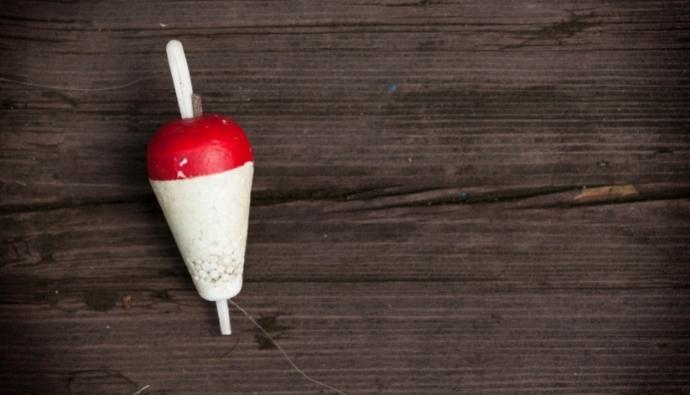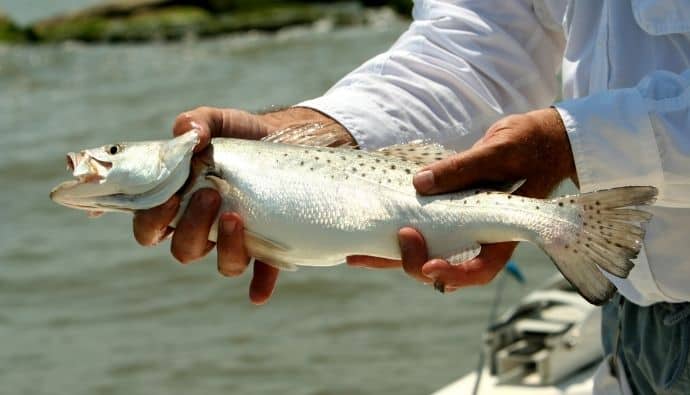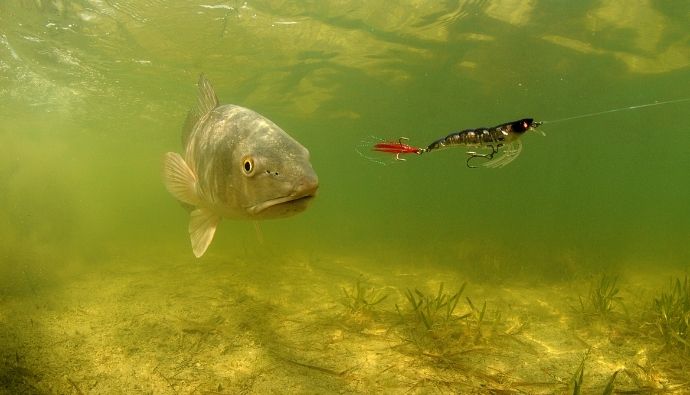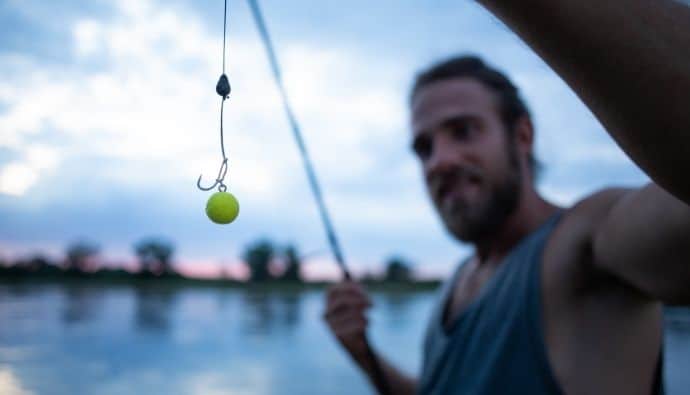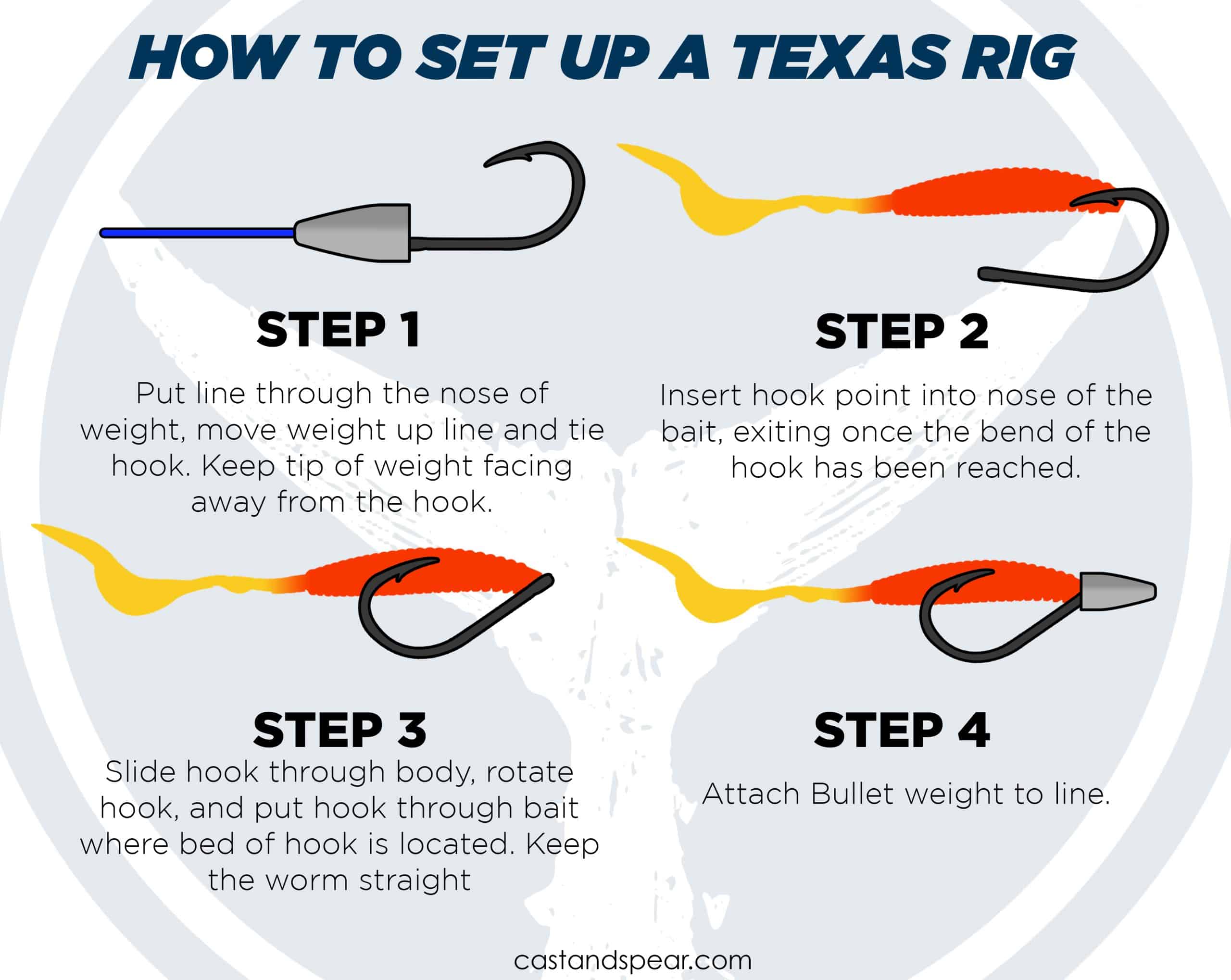Anglers of all skill levels have a preferred bait when the going gets rough. Not every day is guaranteed to have a full icebox, stringer, or premier fishing conditions. In fact, some of the best fishing days start out slow and unproductive, requiring some critical thinking as well as trial and error.
Unconventional techniques, new lures, and different baits often yield unprecedented results that surprise anglers. One of the best rigs to use when the going gets rough is a shaky head rig. This rig is perfect for getting a tight-mouthed bass to swallow it whole when the fish aren’t biting.
In this article, we cover what a shaky head rig is, which one to use, how to use it, and when to use it.
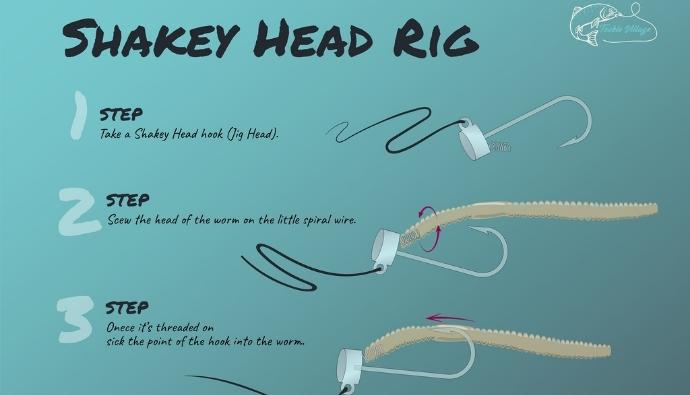
What is a shaky head jig?
Shaky head rigs are small lead jigs compounded with small plastic fishing worms that create the perfect jig lure for finessing a bite out of sluggish bass.
When the bite is slow, and the strikes are low, the fish must be provoked into biting. Shaky head rigs maximize the lure’s movement to evoke a strike from even the most uninterested bass.
Usually, weighing between 1/16-1/4 ounces, lead jig heads are used. The jig head is ball-shaped and directly beneath a lightweight, wire bass hook that threads through the plastic bait. On many of these rigs, a retainer system is in place, which ensures that the bait is snuggly in place and tied to the jig head, creating a weedless option for anglers.
In most cases, the bait is horizontally attached directly to the jig. In addition to the shape of the head, this allows the jig to stand up on its own when reaching the bottom. When the squeaky motion of the plastic trailer is factored in, this provides a mouthwatering meal that’s impossible for the bass to ignore.
Once the jig head reaches the bottom, it is retrieved slowly across a large area. The bait can look akin to a small fish or worm attempting to burrow into the bottom, its tail upright, presenting an easy target. It undulates and sways with the current and requires very little input from the angler holding the rod.
Usually used in conjunction with an incredibly light line and a medium action rod, this setup relies on finesse and presentation over making a splash.
Which shaky head jig to use?
There are two popular kinds of shaky head designs used with soft plastic baits: the standup head and the ball head.
Standup Head
The standup head works well with 6 to 8-inch soft plastic jerk baits and trick worms. Best used on rocky bottoms, this moves through the rock-strewn bottom with minimal obstruction and can be fished slowly without much shaking by the angler, and the jig head ensures that the lure stands straight up.
The most commonly used jig heads range between 3/16 and 1/8 ounces and work well in waters up to 15 feet in depth. Beneath that requires a heavier jig head of up to 5/16 ounces.
Ball Head
The ball head jig provides the bait a back-and-forth motion as the head rolls, rocking as it covers the ground. This jig head style works well when angling open water and gravel bottoms. Stick worms and finesse worms 4 to 6 inches in length work best in conjunction with this jig head.
Because the depth of the water determines the weight of the shaky jig head used, it’s important for anglers to know the waters they intend to utilize in this rig.
This rig has the most success at depths ranging between 5 to 15 feet of water, but anglers have used it deeper and found it to be incredibly effective.
Factors to Consider When Choosing
When deciding on which jig head to use, anglers need to take into consideration two factors—the bottom, as previously referenced, and the natural appearance.
The most natural-looking jig heads are usually the lightest. Smaller sizes ranging from 1/16 to 1/8 ounce jig heads typically provide the most realistic aesthetic beneath the water.
This lighter design allows the jig and its lure to be manipulated by both the current and the angler, creating an accurate portrayal of the bait affixed to the hook.
However, jigs that are too light will not stay in one place when twitched or faced with a stiff current. The gentle and delicate twitch which creates the shaky head motion will be replaced with aggressive movement that will scare the fish away.
Anglers should select a jig head weight that provides the presentation of the bait digging around the bottom, taking up salt and mud in search of food. It is imperative that the jig head remains on the bottom but not sink into it.
When it comes to color, shaky head jigs, or a clear water killer, this means the color scheme of the jig head and, for the most part, the plastics should be as natural as possible. Some of the most effective colors include green pumpkin, pumpkin seed, watermelon, and deep shades of purple.
The heavier the jig head, the more input and energy the angler requires to create the shaking motion. Conversely, lighter jig heads will not reach the same depths and are susceptible to currents. For these reasons, it’s important for anglers to know both their target depth and the total depth of the water they are angling in.
How does a shaky jighead work?
Shaky heads have an alluring presentation along the bottom of any body of water you are angling in as they prop the worm’s tail end up into the water column. This tail-up head-down look provides what appears to be an easy meal for hungry fish, providing the illusion of a burrowing worm or minnow.
The worm’s body will move accordingly with the action that is applied to the line, its head will stay rooted to the jig head, and its tail end, lacking any weight, will move with the water. This provides an incredibly natural presentation of a worm sifting through the silt bottom of any waterway in search of its meal.
Earning the moniker shaky head, this rig operates by taking the stereotypical concept of a jig head and essentially flipping it upside down. Rather than the usual jig head, which incorporates a weight above the hook, forcing the bait to sit directly beneath, this jig head metaphorically and literally flips it on its head.
Because of the attachment point of the line being on the side of the jig head, when the rig reaches the bottom, it is the head, not the hook, that sits downward, leaving the bait upwards in the water column.
Because these are finesse baits, fishing shaky head rigs requires technique over power. The angler should stay in contact with the bottom throughout the retrieval, as the goal is to drag the bait slowly across the bottom while gently raising the rod tip. While the rod tip is being raised, it is gently being shaken from side to side to create the action of the worm sifting through the sediment.
Then lowering the rods, anglers should reel in the slack in a smooth retrieval. Turning the real and lowering the rod simultaneously maintains a tight line without spasms or jerks. A tight line between the angler and jig creates better sensitivity and makes it far easier to detect a bite.
Additionally, the tight line will allow anglers to get a feel for what the bottom of the water columns feels like.
When to use a shaky head jig?
While shaky head jigs can be used year-round to catch bass, both the spring and early fall are prime times to incorporate this setup.
Sight fishing for bass during the spring is one of the most effective ways to incorporate a shaky head jig. Throwing near spawning beds or working the shallows with a shaky head jig is almost guaranteed to yield results. During the spring, more vibrant colors and aggressive movement tend to have better results in eliciting aggressive strikes from spawning bass protecting their nest or snagging a quick meal.
Working off of structure is best during the fall when using a shaky head jig. Brush piles, docs, or submerged structures make for excellent bass ambush spots. Casting past these underwater obstructions and retrieving alongside them makes for an alluring and easy meal for ambush predators such as bass.
During the fall, more subdued colors and less aggressive movement patterns of the shaky jig head tend to yield better results.
Shaky head jigs are some of the most effective jigs to use when the bite is slow on a day. That should be prime time for fishing. By understanding how to work this setup, what colors and sizes to use, and when and where they will be effective, anglers drastically increase the likelihood of bringing home a full stringer using the shaky head jig. As always, good luck, and stay safe out on the water.

 Facebook
Facebook YouTube
YouTube